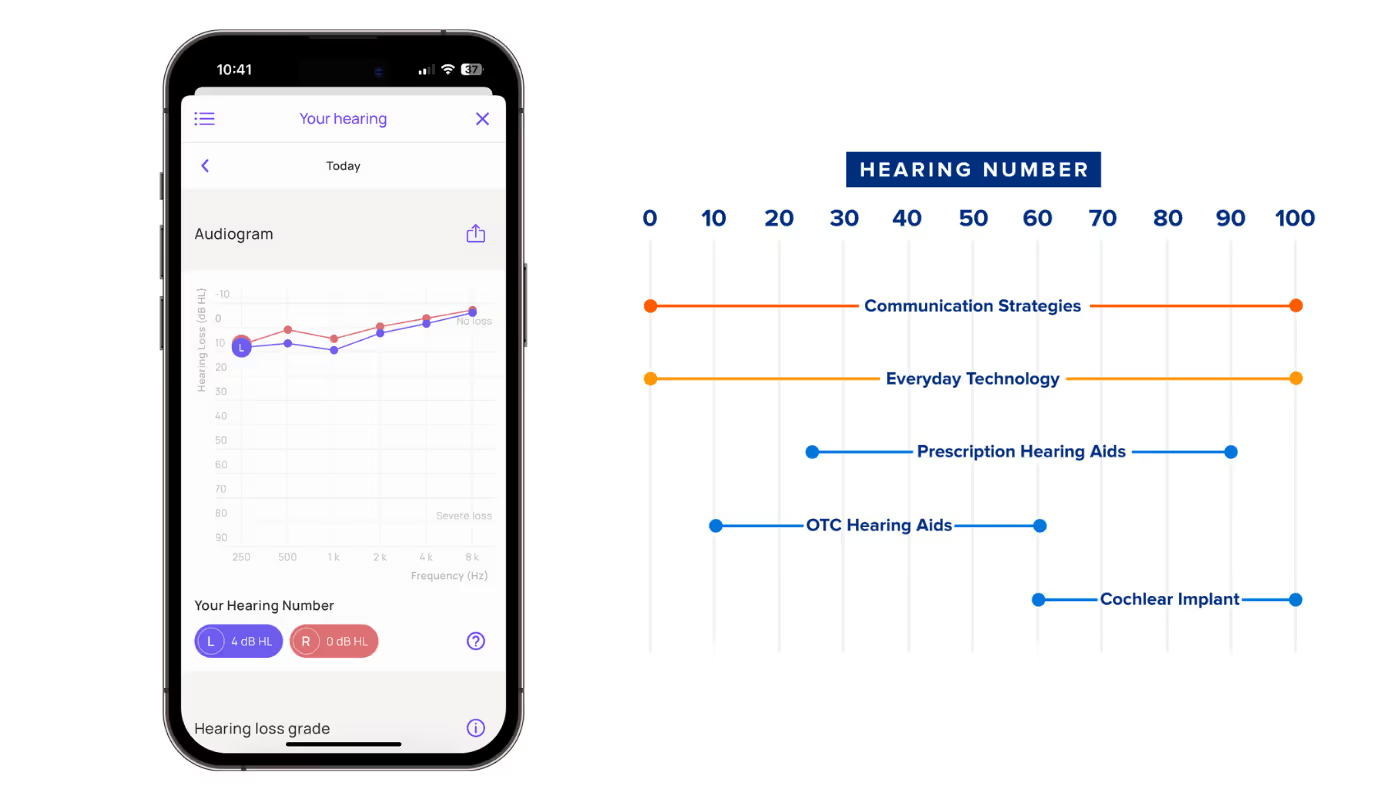The Johns Hopkins Hearing Number Public Health Campaign marks a huge step towards raising public awareness of hearing loss and the consequences it can have on an individual’s social, work and private life if it remains undetected.Knowing your Hearing Number is a step toward taking control of your hearing health now and throughout your life.
How do you get your hearing number?
You can find out your hearing number from the comfort of your home by using an iPhone or iPad and downloading the Mimi Hearing Test App. In the Mimi app, choose the “Pure Tone Threshold Test.” After you take the hearing test your Hearing Number for your left and right ear will appear directly beneath your audiogram. The audiogram shows the quietest sounds you can hear at different frequencies. The closer a mark or point is to the top of a graph, the quieter the sound you can perceive.The concept of a perfect score does not apply to the Hearing Number. As the Hearing Number approaches 0, your ability to perceive soft sounds increases.You may be surprised to see your hearing is better than you thought. However, having knowledge of your Hearing Number provides a reference point for tracking changes in the future, rather than guessing about your hearing health. Everyone’s hearing changes as we get older because parts of the inner ear wear out over time, which occurs naturally as part of our lifelong hearing health journey. This emphasizes the importance of continually checking your Hearing Number, to find any changes as early as possible.
Now you know your number, what’s next?
Your Hearing Number indicates the level at which speech sounds must be for you to hear them. A higher Hearing Number implies a need for louder sounds. Monitoring your number over time can provide valuable insights into changes in your hearing. Armed with this knowledge, you can implement effective communication strategies and leverage technology to enhance your hearing experience. For example you can employ simple tactics like using noise protection to safeguard your hearing, or adopting communication techniques tailored to your needs. Additionally, you can leverage everyday technologies, such as customizing smartphone and headphone outputs, to meet your unique hearing requirements.Knowing your Hearing Number can have a significant impact on your wellbeing in various ways:
- This comprehensive measure provides a benchmark to track your hearing over time, allowing you to make informed decisions and take proactive steps towards protecting your hearing, better communication and quality of life.
- Understanding your Hearing Number empowers you to engage in open discussions about your hearing with loved ones and healthcare professionals, fostering a deeper sense of comfort and confidence.
- By recognizing the value of your hearing as an integral part of your overall health, you can prioritize its care and ensure a better and healthier future for yourself.
You cannot lower your Hearing Number, but you can take measures to protect and preserve your hearing. For additional information on how to prevent hearing loss, please visit https://hearingnumber.org/
